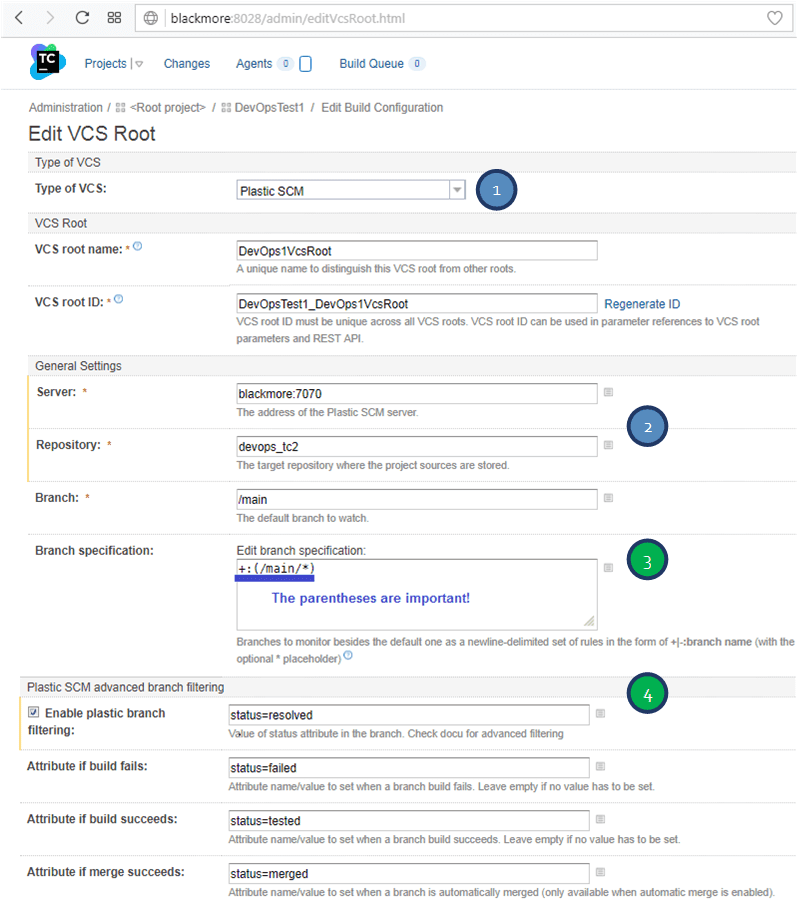

- #TEAMCITY VERSIONS INSTALL#
- #TEAMCITY VERSIONS SOFTWARE#
- #TEAMCITY VERSIONS PASSWORD#
- #TEAMCITY VERSIONS ZIP#
Nowadays, with DevOps, both development and operations happen iteratively and continuously up until the application is fully developed and deployed. Under these circumstances, it’s not surprising that CI/CD has become very popular in the industry and so have CI/CD tools (automation rules!). From the Waterfall model through agile methodology kicking in, and right down to DevOps, things have definitely changed.
#TEAMCITY VERSIONS SOFTWARE#
You can also review the Trend reports if selected.The past decade or so has introduced significant changes to the software development industry. Navigate to the build artifacts specified in the Artifact path and locate the Report.html file to view the test results. The number of attempts to run the test (the minimum is 2 and the maximum is 10).Īfter a test run, Performance Center automatically saves the run results as an artifact with the build. Amount of time, in minutes, to wait between a failed attempt and the next attempt (the minimum is 1 and the maximum is 10). If you do not select this option, the build-step will be labeled as "Passed" as long as no failures occurred.Ĭhoose an action to perform if the timeslot cannot be created: Do not repeat (the task ends), or Repeat with the following parameters:ĭelay between attempts. Select this option to set the build-step status according to a predefined SLA (Service Level Agreement) configured within your performance test. This provides you with a specified number of Vusers (VUDs) that you can run an unlimited number of times within a 24 hour period.īefore using this option, make sure that VUD licenses are applied in your Performance Center environment. If you select this option, enter the trend report ID (supported for version 12.53 or later).Įnter a duration for the Ad-Hoc timeslot.Ĭhoose whether to use a Virtual User Day (VUD) license. If Auto Trending is selected in the Load Test, select this option to automatically publish trend results.Īdd run to trend report with ID. Use trend report associated with the test (Performance Center 12.55 or later). Note: PAC (proxy auto-config) or Automatic configuration script are not supported.Ĭhoose a Post Run Action: Collate Results, Collate and Analyze, or Do Not Collate.ĭo Not Trend. If you use a proxy, enter a proxy in the format http(s)://host:port, and enter the user name and password. Enter the Test Instance ID (available from Performance Center > Test Management > Test Lab > Performance Test Set view).Ĭhoose whether to use a local proxy (leave empty if not using a local proxy). If you select this option, Performance Center creates a test instance or locates the existing test instance. Select an option for adding the Test Instance ID:Īutomatically select existing or create new if none exists (Performance Center 12.55 or later). Select your test and find the ID in the General Details: ID. You can get the ID from Performance Center > Test Management > Test Plan view.
#TEAMCITY VERSIONS PASSWORD#
Select this option if you are running the TeamCity build over a secured Performance Center server.Įnter the user name required to connect to the server.Įnter the password required to connect to the server.Įnter the name of the Performance Center project.Įnter the Test ID. (Optional) Enter a name to distinguish this build step from other steps.Įnter the hostname or IP address of a Performance Center server.Įxample: If the Performance Center server URL is enter MY_SERVER. Select the Performance Center Test build runner type.ĭisplays Performance Center Test, the build runner type you selected in the previous step. In your TeamCity project, create a new build and enter the required configuration details.įor the build you created, select Build Steps and click Add build step.
#TEAMCITY VERSIONS ZIP#

For details, see the TeamCity Documentation.įor the supported server versions, see the Integration with non-Micro Focus products section of the System Requirements.ĭownload the Performance Center-TeamCity extension plugin file which is available from: įrom TeamCity > Administration, under Server Administration click Plugins List.


Verify that your TeamCity server is up and running.
#TEAMCITY VERSIONS INSTALL#
Install and deploy the TeamCity plugin (Performance Center CI)


 0 kommentar(er)
0 kommentar(er)
